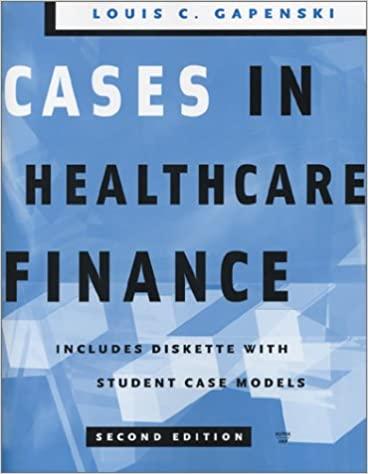Question
Please solve question 1 - 4. The Scene: Early evening in an ordinary family room in Manhattan. Modern furniture, with old copies of The Wall
Please solve question 1 - 4. The Scene: Early evening in an ordinary family room in Manhattan. Modern furniture, with old copies of The Wall Street Journal and the Financial Times scattered around. Autographed photos of Alan Greenspan and George Soros are prominently displayed. A picture window reveals a distant view of lights on the Hudson River. John Smith sits at a computer terminal, glumly sipping a glass of chardonnay and putting on a carry trade in Japanese yen over the Internet. His wife Marsha enters. Marsha: Hi, honey. Glad to be home. Lousy day on the trading floor, though. Dullsville. No volume. But I did manage to hedge next years production from our copper mine (Covid 19 risks). I couldnt get a good quote on the right package of futures contracts, so I arranged a commodity swap. John doesnt reply.Marsha: John, whats wrong? Have you been selling yen again? Thats been a losing trade for weeks. John: Well, yes. I shouldnt have gone to Goldman Sachss foreign exchange brunch. But Ive got to get out of the house somehow. Im cooped up here all-day calculating covariances and efficient risk-return trade-offs while youre out trading commodity futures. You get all the glamour and excitement. Marsha: Dont worry, dear, it will be over soon. We only recalculate our most efficient common stock portfolio once a quarter. Then you can go back to leveraged leases. John: You trade, and I do all the worrying. Now theres a rumor that our leasing company is going to get a hostile takeover bid. I knew the debt ratio was too low, and you forgot to put on the poison pill. And now youve made a negative-NPV investment! Marsha: What investment?John: That wildcat oil well. Another well in that old Sourdough field. Its going to cost $5million! Is there any oil down there? Marsha: That Sourdough field has been good to us, John. Where do you think we got the capital for your yen trades? I bet well find oil. Our geologists say theres only a 30% chance of a dry hole. John: Even if we hit oil, I bet well only get 150 barrels of crude oil per day. Marsha: Thats 150 barrels day in, day out. There are 365 days in a year, dear. John and Marshas teenage son Johnny bursts into the room. Johnny: Hi, Dad! Hi, Mom! Guess what? Ive made the junior varsity derivatives team! That means I can go on the field trip to the Chicago Board Options Exchange. (Pauses.) Whats wrong? John: Your mother has made another negative-NPV investment. A wildcat oil well, way up on the North Slope of Alaska. Johnny: Thats OK, Dad. Mom told me about it. I was going to do an NPV calculation yesterday, but I had to finish calculating the junk-bond default probabilities for my corporate finance homework. (Grabs a financial calculator from his backpack.) Lets see: 150 barrels a day times 365 days per year times $50 per barrel when delivered in Los Angeles . . . thats $2.7 million per year. John: Thats $2.7 million next year, assuming that we find any oil at all. The production will start declining by 5% every year. And we still have to pay $10 per barrel in pipeline and tanker charges to ship the oil from the North Slope to Los Angeles. Weve got some serious operating leverage here. Marsha: On the other hand, our energy consultants project increasing oil prices. If they increase with inflation, price per barrel should increase by roughly 2.5% per year. The wells ought to be able to keep pumping for at least 15 years. Johnny: Ill calculate NPV after I finish with the default probabilities. The interest rate is 6%. Is it OK if I work with the beta of .8 and our usual figure of 7% for the market risk premium? Marsha: I guess so, Johnny. But I am concerned about the fixed shipping costs. John: (Takes a deep breath and stands up.) Anyway, how about a nice family dinner? Ive reserved our usual table at the Four Seasons.
QUESTIONS:
1. Calculate the NPV of the wildcat oil well, taking account of the probability of a dry hole, the shipping costs, the decline in production, and the forecasted increase in oil prices.
2. How long does production have to continue for the well to be a positive-NPV investment? Ignore taxes and other possible complications. Please explain your answers in a detailed manner.
3. Now consider operating leverage. How should the shipping costs be valued, assuming that output is known and the costs are fixed?
4. How would your answer change if the shipping costs were proportional to output? Assume that unexpected fluctuations in output are zero- beta and diversifiable. (Hint: The Joness oil company has an excellent credit rating. Its long-term borrowing rate is only 7%.). Please explain your answers in a detailed manner.
Step by Step Solution
There are 3 Steps involved in it
Step: 1

Get Instant Access to Expert-Tailored Solutions
See step-by-step solutions with expert insights and AI powered tools for academic success
Step: 2

Step: 3

Ace Your Homework with AI
Get the answers you need in no time with our AI-driven, step-by-step assistance
Get Started


